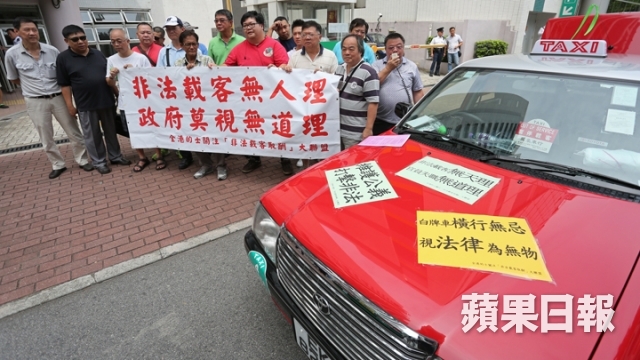The Uber debate has been gathering steam in recent weeks, with over 50,000 people having signed an online petition urging the HKSAR government to adopt a more progressive and open approach to working with the transportation technology service provider.
The arguments I’ve heard in favor of Uber generally fall into two camps. Technology aficionados and market libertarians are quick to point out that deregulation, competition, and modernization are all unequivocally positive forces, almost irrespective of context. This smartphone-touting crowd will readily use buzzwords like “disruption innovation” and “creative destruction”, harking back to the dot-com days of the late 1990s. The other commonly cited reason – and perhaps the one that resonates strongly with the general public – is that Hong Kong taxi drivers have become synonymous with terrible service, hence anything that threatens their livelihood must necessarily be a good thing. Both reasons are flawed.
The latter is simply a vindictive “serves you right” argument, but retributive policymaking has no role in a civil society. Anyone living in Hong Kong will have had their share of unpleasant taxi rides, typified by the disgruntled driver who doesn’t mutter a word besides the occasional profanity complaining about your choice of destination. Consumers certainly have the right to demand an alternative with better service. The government, however, cannot invoke the same rationale to permit the propagation of a technology that broadly threatens the livelihood of all drivers. Simply put, not all taxi drivers are spiteful foul-mouthed orcs who deserve to be put out of business.

In response to the free-market junkies, one needs to understand Uber’s disruptiveness from an economics perspective. Uber perfectly matches demand with supply: riders have timely access to transport where and when they want, for the price they want, and drivers can locate the nearest client seeking their service. Economists generally agree on the merits of free markets and competition, but models of neoclassical economics often assume a homogeneous labor pool, and that supply and demand can “equilibrate” quickly and automatically.
If Uber is displacing taxis, then a taxi driver who loses his job will immediately find work in the growing transportation technology industry, maybe designing mobile apps or programming GPS devices. Clearly this is not a realistic depiction of labor markets, so regulators need to think about how to protect existing drivers while the taxi market transitions to one where drivers and these new technologies co-exist.

The opposition and controversies encountered by Uber elsewhere in the world is proof that unfettered introduction of such a disruptive technology comes with some collateral damage. Taxi drivers need to be able to compete with Uber-like technologies on an equal playing field. Local taxi companies invest millions into taxi licenses (the cost of which has risen sharply in recent years, thanks to local speculators and a sprinkling of mainland punters). A small number of drivers rely on their self-owned licenses as retirement savings. How can these groups be compensated as the market for traditional taxis shrinks in value? Perhaps some form of licensing should be required of Uber drivers, too?
The Uber platform has much to offer consumers and regulators alike: an efficient way to pair riders with drivers, transparent and competitive pricing, and an effective mechanism to monitor and ensure service quality. One can imagine a future where traditional taxis are in fact integrated into the Uber ecosystem. That has not happened yet, and laissez-faire capitalism is certainly not the way to get us there.
